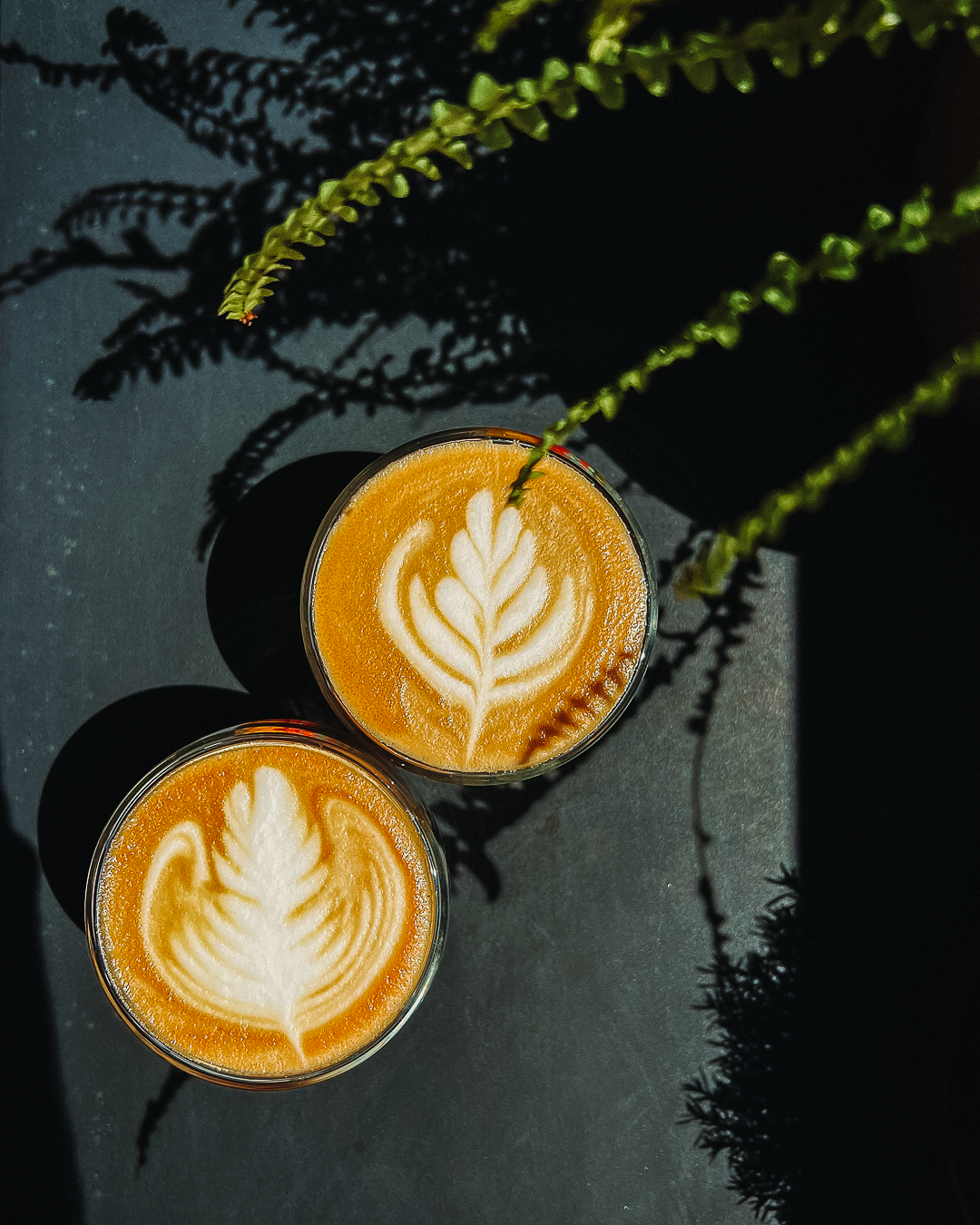
Sun Aug 18 - Written by: Tudor Radoni
Rosettas and Tulips - How to Pour Two Classic Latte Art Designs
The art of pouring a design is a skill that requires practice and patience. Here are two of the most popular designs: the rosetta and the tulip.
Two of the most recognizable patterns in this art form are the rosetta and the tulip. Let’s explore how they’re made and what makes them stand out.
Rosetta
The rosetta, often called the “feather,” is one of the most iconic and perhaps challenging patterns in latte art. It’s a flowing, symmetrical design that resembles the shape of a fern or a tree, with intricate leaf-like details and a central stem.
How it’s made
- Steamed milk: Start with perfectly steamed milk, ensuring it has a creamy, velvety microfoam, but not the puffy kind. (you can see I messed up, but I’m kinda happy with the result nonetheless 😅).
- The Base: Depending on the type of rosetta you are going for, you might need a certain type of base. For a classic rosetta, you’d want integrate milk until about 3/4 of the cup is filled. For a wrap-around rosetta, though, like the one in leftmost cup, you only want to integrate a small amount of milk, to leave room for the rosy.
- Pour technique: Begin by pouring the milk into the center of the espresso, with a pencil-thin flow. As soon as you can see a line about a centimeter away for the pitcher’s spout, start rippling side to side, but make sure to stay in the middle for a bit, to let the rosetta wrap around the base. Then, move backwards to the edge of the cup and cut gently, to create the rosetta’s leaves.
- The cut: Take care when cutting through the design - should you cut too heavily, you will sink most of the color in the leaves, and you’ll end up with less contrast.
Tulip
The tulip is a more structured and layered design, consisting of a series of milk dots stacked on top of each other. This pattern allows you to experiment with different number of layers, creating a simple or complex design (bonus points: it makes for a great competition design, to see how many layers can a barista stack).
How it’s made
- Steamed milk: Like the rosetta, the milk needs to have the right texture—smooth microfoam with a good balance of air and liquid. Actually, for pretty much each type of design, you need perfect milk. I’ll stop mentioning it from now on 😅.
- Pour technique: More layers = less base (because you have more room). Land directly in the certer on the cup and slighty nudge the pitcher forward as long as you lay the dots. If you stay too much before pushing forward, you’ll end up cutting the dots, and you don’t want that! What you want, though, is to create more space for the next shape by scooping the pitcher up a bit after you lay the dots. Whenever you perform a stack, move the pitcher just a bit higher in the cup, to create a nice, clean separation between the layers.
- Tips: If you want to add to add a heart on top of the tulip, you can do so by pouring a dot further away from the stack.
- The cut: When striking through the design, make sure to cut on a diagonal, as if the pitcher was a plane taking off. This will make sure you don’t sink much of the color between the layers.
Go and pour!
Both the rosetta and tulip are great ways to showcase a barista’s control over milk texture, pouring technique, and creativity. Whether you’re a beginner learning the basics or a seasoned barista perfecting your craft, these patterns remain timeless staples in the world of latte art.
Enjoy your next coffee with a beautifully poured design!